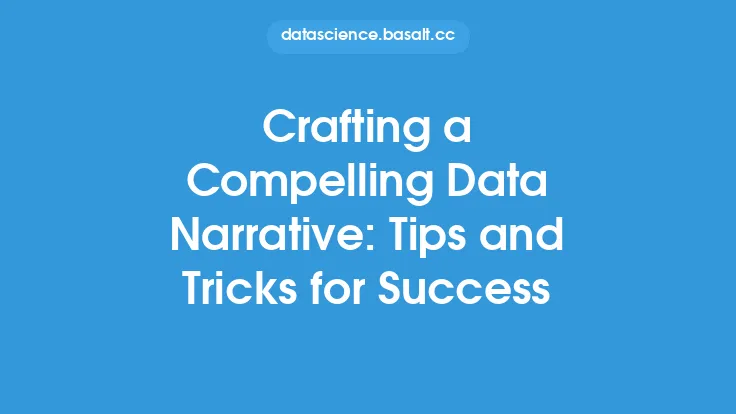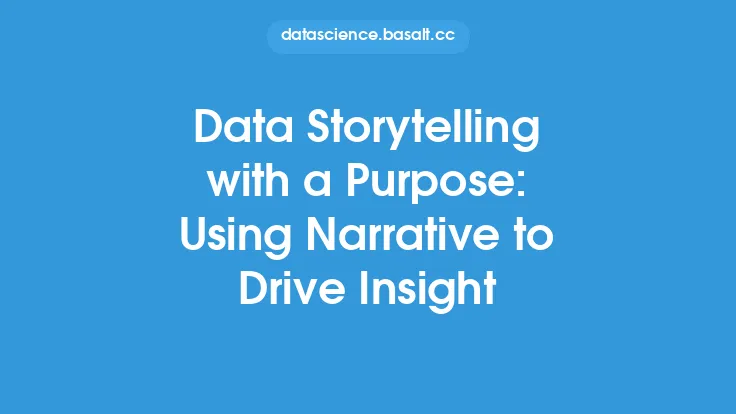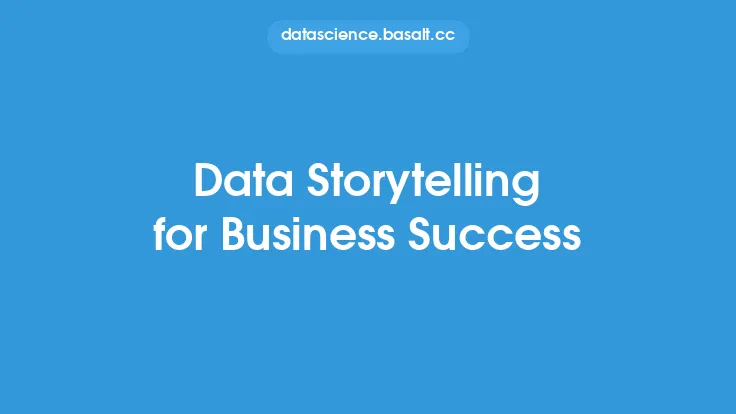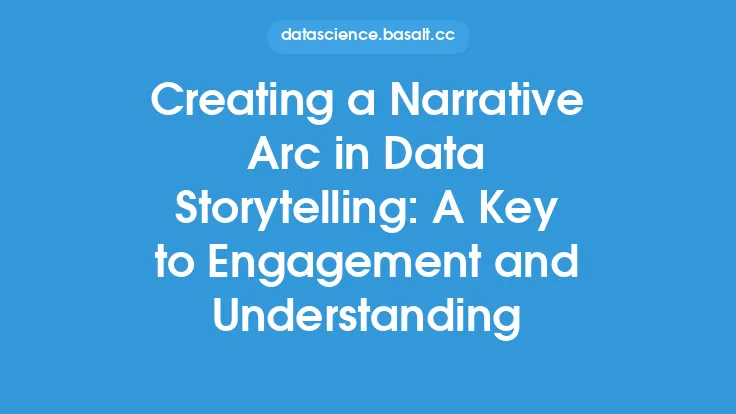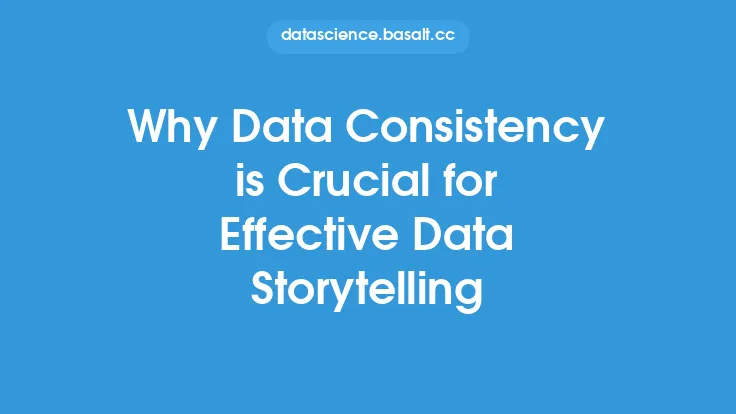When it comes to data storytelling, the way in which data is presented can greatly impact the audience's ability to understand and engage with the information. A well-structured narrative can make complex data insights more accessible and memorable, while a poorly structured narrative can lead to confusion and disinterest. This is where narrative structures for data storytelling come in – a framework for organizing and presenting data in a way that is both informative and engaging.
Introduction to Narrative Structures
Narrative structures for data storytelling refer to the underlying framework or organization of a data-driven narrative. This can include the sequence of events, the relationships between different data points, and the overall flow of the story. A good narrative structure should be logical, easy to follow, and tailored to the specific needs and goals of the audience. There are several different types of narrative structures that can be used for data storytelling, including linear, non-linear, and interactive structures. Each of these structures has its own strengths and weaknesses, and the choice of which one to use will depend on the specific context and goals of the narrative.
Types of Narrative Structures
Linear narrative structures are the most common type of narrative structure used in data storytelling. This type of structure presents the data in a straightforward, chronological order, with each piece of information building on the previous one. Linear structures are easy to follow and can be effective for presenting simple, straightforward data insights. However, they can become boring or predictable if the data is complex or nuanced. Non-linear narrative structures, on the other hand, present the data in a more flexible, non-chronological order. This type of structure can be used to create a more dynamic, interactive experience for the audience, and can be effective for presenting complex or multifaceted data insights. Interactive narrative structures take this idea a step further, allowing the audience to engage with the data in a hands-on way. This can include features such as filters, drill-down capabilities, and other interactive elements that enable the audience to explore the data in more depth.
Key Elements of a Narrative Structure
Regardless of the type of narrative structure used, there are several key elements that are essential for effective data storytelling. These include a clear and concise thesis statement, a well-organized sequence of events, and a logical flow of information. The thesis statement should clearly and concisely summarize the main insight or finding of the data, and provide a framework for the rest of the narrative. The sequence of events should be logical and easy to follow, with each piece of information building on the previous one. The flow of information should be smooth and uninterrupted, with clear transitions between different sections or ideas. Additionally, the narrative should include visualizations and other interactive elements to help illustrate key points and make the data more engaging.
Best Practices for Creating a Narrative Structure
Creating a narrative structure for data storytelling requires a combination of technical skills, creativity, and attention to detail. One best practice is to start by defining the key message or insight that you want to communicate, and then work backwards to create a narrative structure that supports this message. This can involve identifying the most important data points, determining the sequence of events, and selecting the most effective visualizations and interactive elements. Another best practice is to keep the narrative structure simple and intuitive, avoiding unnecessary complexity or clutter. The narrative should be easy to follow, even for audience members who are not familiar with the data or the subject matter. Finally, it's essential to test and refine the narrative structure, soliciting feedback from others and making adjustments as needed.
Technical Considerations
From a technical perspective, creating a narrative structure for data storytelling can involve a range of tools and technologies, including data visualization software, interactive web applications, and storytelling platforms. Some popular tools for data visualization include Tableau, Power BI, and D3.js, while popular platforms for interactive storytelling include Shorthand, Adobe Spark, and ad hoc custom-built solutions. When selecting a tool or platform, it's essential to consider the specific needs and goals of the narrative, as well as the technical skills and resources available. Additionally, it's important to ensure that the tool or platform is scalable, flexible, and able to handle large and complex datasets.
Common Challenges and Pitfalls
Despite the importance of narrative structures for data storytelling, there are several common challenges and pitfalls that can arise. One common challenge is the difficulty of communicating complex or technical data insights in a clear and concise way. This can require a range of skills, including technical expertise, creativity, and attention to detail. Another common pitfall is the temptation to include too much information, or to try to communicate too many different insights or findings. This can lead to a narrative that is cluttered, confusing, or overwhelming, and can detract from the overall impact and effectiveness of the story. Finally, it's essential to avoid common mistakes such as using overly complex language, failing to provide context or background information, and neglecting to engage the audience on an emotional level.
Conclusion and Future Directions
In conclusion, narrative structures are a critical component of effective data storytelling, providing a framework for organizing and presenting data in a way that is both informative and engaging. By understanding the different types of narrative structures, key elements, and best practices for creating a narrative structure, data storytellers can create compelling and memorable stories that resonate with their audience. As the field of data storytelling continues to evolve, it's likely that we will see new and innovative narrative structures emerge, taking advantage of advances in technology, data visualization, and interactive storytelling. By staying up-to-date with the latest trends and techniques, and by continually refining and improving our narrative structures, we can unlock the full potential of data storytelling and create a new generation of data-driven narratives that inspire, educate, and engage.
